Walk down the jams and spreads aisle of your local supermarket and look at the manuka honey. As well as the price of the stuff, the other thing you notice is the different abbreviations adopted on the labels. To the layman the letters TA, MGO, NPA and UMF are meaningless. But to the manuka honey industry, they are everything.
These letters can potentially make the difference between being able to sell a product for upwards of £30, or a couple of quid. That’s why this burgeoning industry has become riddled with corruption, with the soaring retail price of manuka honey - christened ‘liquid gold’ - leading some bogus operators to perpetrate food fraud on a massive scale.
How can we state this with such confidence? Because more manuka honey is sold around the globe than is actually exported by New Zealand, its sole source, say industry experts. In fact sales in the UK alone account for more than NZ’s total output.
This is not a new fraud. As long ago as July 2014, New Zealand’s Ministry for Primary Industries (MPI) introduced interim labelling guidelines for manuka honey to clamp down on sales of fraudulent manuka honey. Any company breaching the guidelines would have their product held at the port of exit, said the MPI.
In the UK, the FSA welcomed the MPI’s initiative, which it said would help with its own programme of enforcement. But two years down the line, many manuka honey industry members argue the guidelines have been completely ineffective. Indeed a Food Crime Annual Strategic Assessment Survey, undertaken by the FSA’s National Food Crime Unit earlier this year, revealed UK tests had identified “non-compliances in around a third of tested samples of products labelled as manuka, in terms of quality, declared activity or botanical origin compared to the declarations on the label”.
Some even believe the MPI’s initiative only served to make matters worse. When the guidelines were introduced in 2014, they dictated that producers could not make therapeutic claims about their honey; that claims such as ‘non-peroxide activity,’ ‘total peroxide activity,’ ‘peroxide activity,’ ‘total activity’ and ‘active’ should be removed from labels; that manuka honey must contain the chemical marker methylglyoxal (MGO) and the content level of MGO must be retained throughout the shelf life of the product.
While the MPI’s attempt to tackle the problem were well intentioned, the technical details of its approach received a mixed response. Peter Molan, the Waikato professor who first discovered the antibacterial properties of honey from bees that fed off New Zealand’s indigenous manuka plant back in 1982 - told The Grocer in 2014 he was appalled by the guidelines.
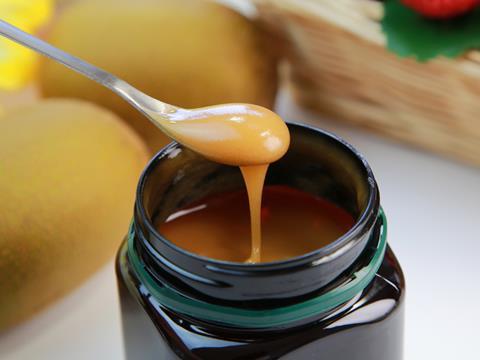
“My opinion is that the guidelines have been produced to protect the existing business of people passing off as manuka honey products that do not have the special non-peroxide activity that is unique to manuka honey,” said Molan, who has since passed away.
He believed the guidelines were not prescriptive enough and would be largely ineffectual. And so it’s proved. “Whilst we welcome the intent of the MPI guidelines and acknowledge that the task of regulating manuka is not an easy one, we believe that, 24 months since their release, they have failed to deliver any positive change within the market,” says Kirstie Jamieson, marketing director at Rowse. “If anything they have unfortunately legitimised bad practice by allowing honey that contains any MGO to call itself manuka, without specifying the minimum amount of MGO that should be present.”
It’s a view shared by Rashda Ali, general manager Europe at Comvita. “UMF was accepted as the industry benchmark prior to the MPI guidance. The introduction of interim MPI guidance has caused a lot of confusion and has been used to sell products that would not be classified as manuka under the UMF standard.”
Guidelines that are easy to dodge
One of the main problems industry experts have identified is that the guidelines are too easy to circumnavigate. The MPI would not allow honey suppliers to export jars of manuka that didn’t meet the guidelines so, as one source tells The Grocer: “If you want to use the New Zealand prohibited terms you’re encouraged to export bulk and then pack and label overseas - now that’s adding value.”
Allan Kinsella, acting deputy director-general, regulation and assurance at the MPI, acknowledges that regulating manuka is a “complex and challenging” issue that the New Zealand government has invested considerable time and resource into untangling. However, it’s important to bear in mind that what the government intended to achieve through the introduction of the guidelines was only ever an interim measure.
“The interim guidelines alone were not intended to be a final and definitive response to the concern of mislabelling, or to resolve disagreements about what constitutes manuka honey,” says Kinsella. “The guidelines are not legally binding, they are simply a tool to clarify and explain existing requirements that are legally enforceable under the Australia New Zealand Food Standards Code for consumers, producers and importing countries. In this respect they have been successful in helping to enhance clarity, but we acknowledge that more work needs to be done.”
Kinsella says that MPI is “close to reaching a conclusion of its work to find a scientifically robust definition for manuka honey” - it’s anticipated that this work will be completed by the end of this year - and “continues to enforce the law within its jurisdiction”.
To this end he confirms there have been “instances where MPI has withheld the required export certification for honey due to labelling requirements not being met”. However, the MPI won’t reveal how much or which companies were affected. But as the UK is the largest market for bulk honey from New Zealand, the MPI liaises regularly with the FSA. “Our collective goal is to help ensure consumers can have confidence in New Zealand honey,” Kinsella adds.
Harmonisation
It’s also taking time, effort and energy to tackle the issue from a UK perspective, with several government departments involved: Defra, which leads on honey composition and labelling policy; the Department of Health, which leads on nutrition and health claims policy; and the FSA, which leads on enforcement, have been working closely with the New Zealand government in a “harmonised approach”.
“We remain in contact with New Zealand and continue to share information and encourage surveillance to ensure that anyone selling such honey is aware they must fully comply with the law in the UK,” says an FSA spokesman.
However, he concedes that although the agency’s own national food crime unit found issues with a third of jars of manuka honey sampled, the FSA is not aware of any formal prosecutions - and the FSA wouldn’t divulge how many jars were tested.
That’s not to say the FSA has been inactive. It’s currently compiling advice for the enforcement community based on evidence gathered from its testing programme, in addition to carrying out manuka research through the FSA’s own consumer panel.
“We are aware the use of claims on the labelling of honey has become more popular, leading to inconsistencies and confusion, particularly around ‘activity’ claims,” says the spokesman.
“We appreciate that for the consumer this is potentially misleading. Consumer perception is an important factor that must be considered and the results from the consumer research on manuka will help inform the UK position, and discussions at European level, in order to reach a consensus on how to deal with the labelling issues.”
The results of this initiative will be published before the autumn. One area that will be considered is whether enforcement authorities may benefit from advice on terms relating to peroxide and activity levels on manuka honey labelling, and whether these may constitute health claims.
Not everyone is convinced by the FSA’s efforts. Andrew Thain, a former Sainsbury’s and Holland & Barrett buyer who launched one of the first manuka honey brands fully compliant with the MPI’s new labelling guidelines in 2014, thinks the agency isn’t doing enough.
“The FSA and Trading Standards could fix the market overnight by enforcing existing UK and EU labelling legislation,” says Thain. “Over 80% of manuka labels in the UK don’t comply with EU labelling law and I advised them of this in emails and at a meeting at their HQ. It’s time the FSA police the manuka category like suncream. They are the only two products in a supermarket that claim an ‘activity level’ on the pack.”
But Thain doesn’t just blame the authorities for the UK manuka honey industry’s current woes - he believes buyers are equally to blame. “Retail buyers are happy with the current situation as they are making their percentage margin targets,” says Thain. “To quote one buyer: ‘why sell a Rolls-Royce when the buyer is happy with a Ford?’”
The Grocer contacted all of the major UK high street retailers to comment on this issue. Only a handful responded and the comments were eerily similar.
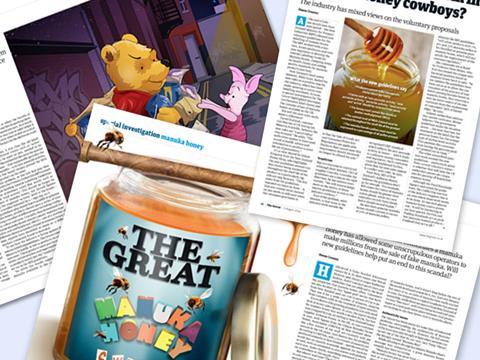
“Our suppliers have confirmed to us they have thorough processes in place to ensure the highest quality of their ingredients,” said a spokeswoman for one of the grocers. Holland & Barrett, one of the largest retailers of manuka honey in the UK, provided the most comprehensive response. A spokesman says all suppliers are required to provide statements of origin and it conducts checks on imported manuka using FERA - the same food auditing laboratory used by the UK government.
“In light of these measures, we are confident the manuka products we retail are genuine and comply with the descriptions on the labels,” he adds.
“If the difference between the reported volume of consumer demand and product availability is correct, then there is undoubtedly some fraud occurring in the supply chain somewhere, but we believe this is most likely to be online or in markets other than the UK, where a combination of enforcement and responsible retailing safeguards consumer interest.”
One UK retailer arguably taking a “responsible” new approach is Aldi. Earlier this year it replaced its existing jars of TA 10+ manuka honey with a product simply labelled ‘manuka type honey,’ which it says contains manuka honey sourced directly from New Zealand. “As manuka honey is a natural product, the pollen content and medicinal benefits naturally vary,” says a spokeswoman. “To be transparent, we label our manuka honey, which is sourced from New Zealand, as ‘Manuka Type’ honey.” It costs £4.29 for a 250g jar.
Real progress
Further positive inroads have also been made by the Unique Manuka Factor (UMF) Honey Association - a New Zealand-based organisation whose quality trademark is used for manuka honey products - which has been researching manuka honey for the last few years.
John Rawcliffe, general manager of the UMF, says “we now know what manuka is”. The findings of the UMF’s research, which were due to be presented in New Zealand on 9 August, include the identification of more than 18 characteristic signature markers in manuka honey. The UMF Honey Association has applied for a classification mark and developed a manuka honey indicator test. It has also IP protected the key unique signature markers of manuka honey.
“Now that’s real progress and is protecting New Zealand inc,” says Rawcliffe. “This is based on industry initiative and funding - not a government cent.”
The breakthrough can’t come soon enough for many manuka honey experts who fear the industry’s existing problems could be about to get much worse.
“In the last year the industry has seen a poor crop, which has resulted in exports decreasing year-on-year and this is at a time of growing demand which has led to further price increases,” says Rowse’s Kirstie Jamieson.
“This combination of factors could potentially encourage further malpractice. Therefore tighter regulations, led by robust and proven science, are needed if we are to protect the value of authentic manuka honey.”
And to protect UK consumers from still being ripped off when they buy it.
How manuka got into a sticky situation
1981 Dr Peter Molan starts researching the antibacterial properties of Manuka honey.
May 2009 Industry warnings over the increasing amount of fake Manuka hitting the market go public. Dr Molan says “two thirds of what is being sold is not the genuine article” and splits with the Active Manuka Honey Association.
April 2012 Some global markets are now “saturated” with fake manuka honey, according to a report in NZFarmer.co.nz
June 2014 The Grocer is contacted by a mysterious figure calling himself ‘Manuka Man’ who claims that UK consumers were buying tonnes of jars of rogue manuka honey. The Grocer investigates his claim, commissioning Minerva Scientific, one of Europe’s leading independent honey testing labs, to test seven randomly selected jars of manuka honey available in the UK. Six showed potential discrepancies between what was stated on the label and what the lab results showed.
July 2014 One month later than anticipated, the New Zealand Ministry for Primary Industries (MPI) released new voluntary guidelines for the labelling of manuka honey to clamp down on health claims and set quality standards for manuka products.
September 2015 Dr Molan slams the voluntary guidelines and warns they could play into the hands of manuka fraudsters
May 2015 The Grocer tests 15 manuka honey products against the MPI’s new labelling guidelines and finds potential issues with a number of them.
September 2015 Dr Molan, who was awarded an MBE in 1995, dies at home on September 16, aged 71. At his funeral, he was described as a “shining knight on a crusade” for his work to stamp out fake manuka.
August 2016 The UMF Honey Association unveils the findings of its “what is Manuka?” project in New Zealand. The UMF has applied for a classification mark and has developed an indicator test. It has also IP protected the key unique signature markers of Manuka honey.







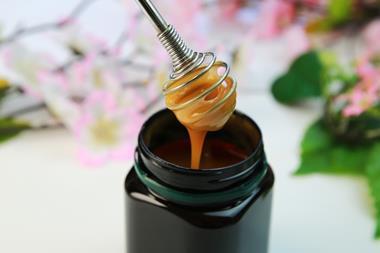
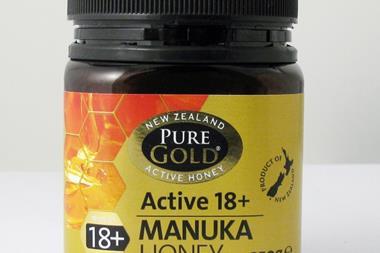
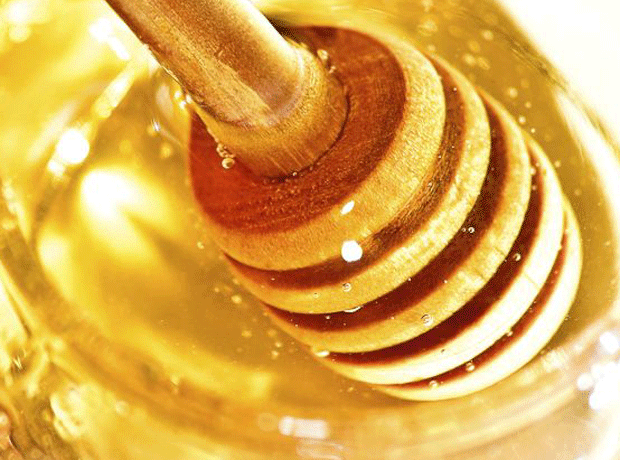
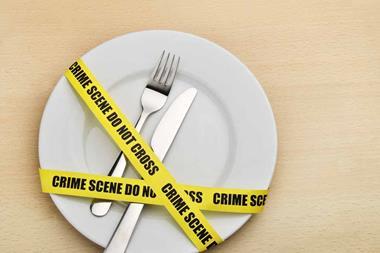








No comments yet